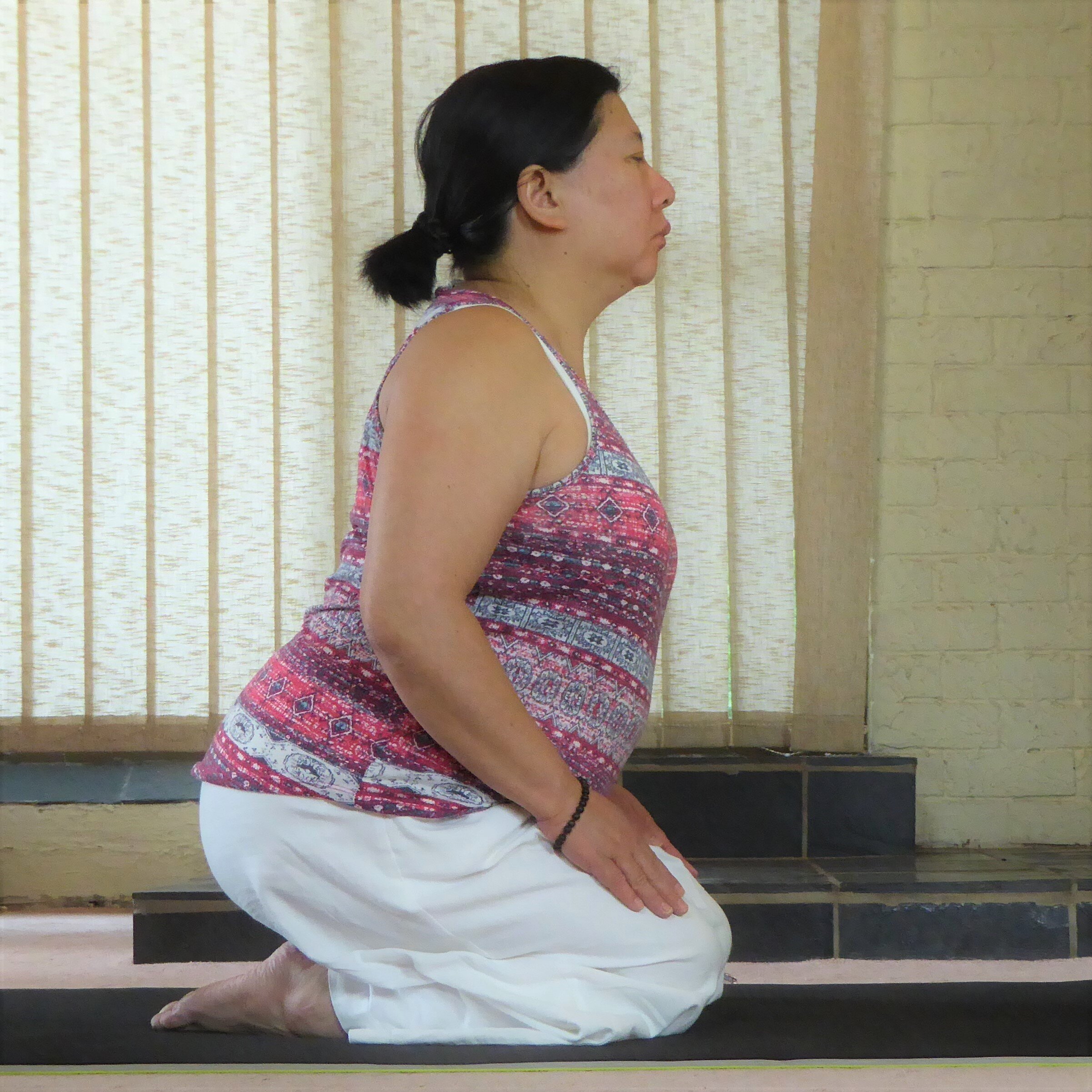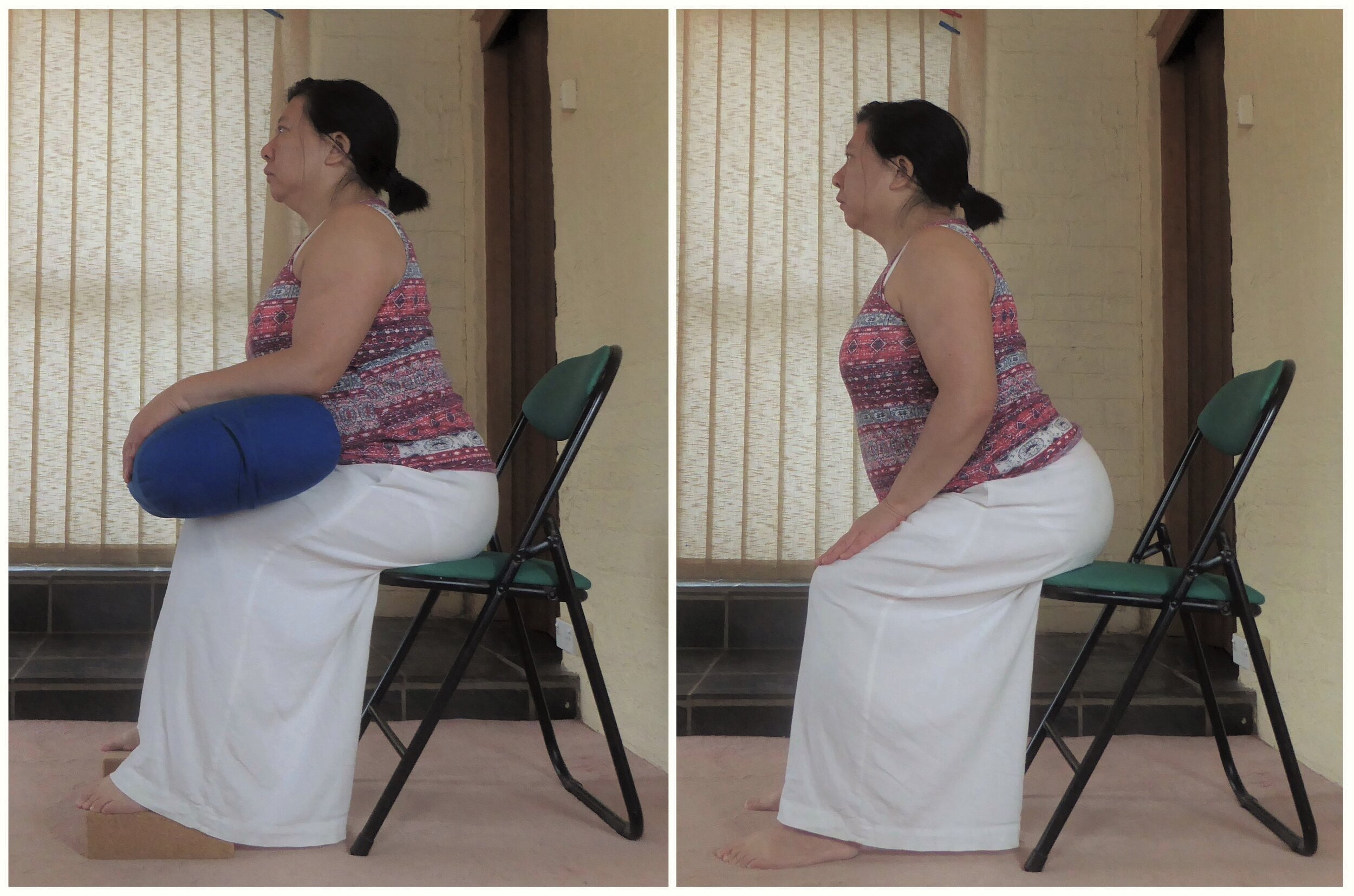Practice Point: Cobra (and Sphinx)
What do you think of your posture?
I remember looking at my wedding photos almost 30 years ago and thinking how hunched I looked. I’d only been working for three years but given my job involved long hours on a computer, I was already starting to develop the classic techie posture: shoulders rolling forward, upper back rounding, and head forward. I hated the look, felt self-conscious about it, but didn’t really know what to do about it other than try to sit up straight at my desk.
It was only after I started regularly practising yoga that I discovered the poses I needed to improve my posture, and back bending poses like cobra (bhujangasana) and sphinx (salamba bhujangasana) were key to building the strength and openness I needed.
Before you begin ...
Be cautious if you:
- Have osteoporosis
- Have back or neck problems
- Have abdominal problems or recent abdominal surgery
Practise from a kneeling, seated or standing position to avoid placing pressure on the abdomen.
- Are pregnant
Practise from a kneeling, seated or standing position to avoid placing pressure on the abdomen.
Before practising the pose, dynamically warm up the spine with a pose like cat. You might also like the warm up the hips and shoulders (for example, hip and shoulder rotations).
After practising the pose, you might like to do a counterpose that flexes or stretches the back (for example, a forward fold like pose of the child).
The practice
Cobra (and its variation, sphinx) can be performed lying prone on the floor, kneeling, seated in a chair, or standing.
Note: Whichever variation you choose, aim for equal stretch through the whole spine. Come out of the pose if you feeling any pinching or pressure in the lower back.
Lying on the floor
Important: This variation is not appropriate if you’re pregnant, have abdominal problems or had recent abdominal surgery. Instead try a kneeling, seated or standing variation.
Top: Sphinx; Bottom: Cobra
Lay down on the floor on your abdomen with your legs together or about hip-width apart.
For sphinx, place your palms flat on the ground, hands above the shoulders with the thumbs about level with the eyes.
For cobra, place your palms flat on the grounds, hands below the shoulders. Draw the elbows in and the shoulders back and away from your ears.
Brace and lengthen through the back.
Think about:
Pushing into the tops of the feet
Activating the thighs
Engaging the abdominals
Creating length between your tailbone and your crown
Inhale and slowly peel the upper body off the floor.
Imagine you’re rolling a marble along the floor with your nose as you bring the head back and then slowly peel the breastbone off the floor.
For sphinx:
Draw the elbows in so they come under the shoulders and in line with the hands and imagine you’re pulling the floor back towards you to push your chest through.
Feel that your shoulders and chest are open, your neck is long (that is, your shoulders are not hunched) and your spine is long (there is no pinching or discomfort in the lower back).
Adjust the position of your hands and elbows to achieve this feeling.
Try bringing the elbows forward or hands wider or both.
For cobra:
Keeping the elbows close to the body, gently push into the hands.
Feel that your shoulders and chest are open, your neck is long (that is, your shoulders are not hunched) and your spine is long (there is no pinching or discomfort in the lower back).
Adjust the position of your hands or lower the body to achieve this feeling.
Hold for a few breaths before exhaling while releasing the position and lowering to the ground.
Breathing
Inhale as you lengthen through the spine and raise the body.
Breathe normally while you hold the position.
Exhale as you release the position and lower back to the floor.
Kneeling
Start in a comfortable kneeling position.
You might like to try one or more of these suggestions to make the position comfortable:
Place a rolled up towel or blanket under the ankles
Place a blanket, cushion or pillow between the upper and lower legs
Sit astride a bolster or rolled up blanket
Place your hands on your thighs and gently come forward from the hips. You might like to round the spine a little to release and lengthen the lower back.
Keeping this slight forward tilt, inhale and lengthen up through your spine, opening the chest and shoulders, and raising the chin slightly.
Hold for a few breaths before returning to your kneeling position on an exhalation.
Kneeling cobra
Breathing
Inhale as you lengthen the spine and open the front of the body.
Breathe normally while you hold the position.
Exhale as you come back to your kneeling position.
Seated in a chair
Sit comfortably in a chair with your back straight and feet supported.
If you have a bolster or pillow, place it across your lap.
Place your hands on your thighs, the bolster (or maybe even the arms rests of the chair), and gently come forward from the hips. You might like to round forward a little to lengthen through the lower back.
Keeping this slight forward tilt, inhale and lengthen through your spine, opening the chest and shoulders, and raising the chin slightly.
Hold for a few breaths before returning to your seated position on an exhalation.
Left: Chair cobra using bolster across lap and blocks under feet for support.
Right: Chair cobra placing hands on thighs and feet on the floor.
Breathing
Inhale as you lengthen through the spine and open through the front of the body.
Breathe normally as you hold the position.
Exhale as you come back to your seated position.
Standing
A standing cobra can be performed from a semi-squat position or against the wall.
Standing cobra from a semi-squat
Standing cobra from a semisquat position
Stand with the feet about hip-width apart.
Bend the knees to come into a shallow squat and place the hands on the thighs.
Inhale and lengthen through your spine, opening the chest and shoulders, and raising the chin slightly.
Hold for a few breaths before releasing your position and coming back to standing.
Breathing
Inhale as you lengthen through the spine and open the front of the body.
Breathe normally as you hold the position.
Exhale as you release the position and return to standing.
Standing cobra against the wall
Face towards a wall and stand as close to it as comfortable.
Place your palms flat against the wall about level with the shoulders. Draw the elbows in and the shoulders back and away from your ears.
Brace and lengthen through the back.
Think about engaging the abdominals, pushing the pelvis towards the wall, and creating length between your tailbone and your crown.
Inhale and slowly peel the upper body away from the wall.
Feel that your shoulders and chest are open, your neck is long (that is, your shoulders are not hunched) and your spine is long (there is no pinching or discomfort in the lower back).
Adjust the position of your hands or lower the body to achieve this feeling.
Hold for a few breaths before exhaling as you slowly come back to standing.
Breathing
Inhale as you lengthen through the spine and open the front of the body.
Breathe normally as you hold the position.
Exhale as you release the position and return to standing.
Standing cobra at the wall
Benefits
Improves posture by strengthing back muscles and expanding the chest
Improves flexibility in the upper and middle back
Stretches abdominal organs and stimulates digestion
Can energise the body and reduce fatigue





